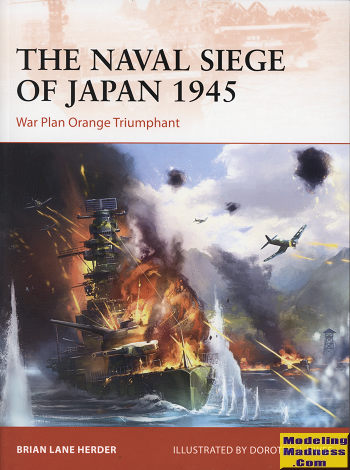 During
the war in the Pacific, there were two main theaters pushing towards Japan. One
was MacArthur's advancements in the southwest Pacific towards the Philippines.
Then there was Nimitz' island hopping campaign through the central Pacific that
eventually ended up in the capture of Okinawa and Iwo Jima. These were
considered stepping stones that had to be overcome to allow the USAAF to base
its heavy bombers on those islands. This allowed them to fairly easily reach the
home islands of the Japan.
During
the war in the Pacific, there were two main theaters pushing towards Japan. One
was MacArthur's advancements in the southwest Pacific towards the Philippines.
Then there was Nimitz' island hopping campaign through the central Pacific that
eventually ended up in the capture of Okinawa and Iwo Jima. These were
considered stepping stones that had to be overcome to allow the USAAF to base
its heavy bombers on those islands. This allowed them to fairly easily reach the
home islands of the Japan.
All of this was pretty well planned out before the war
even began. It was realized in the 1930s that the Japanese may well become a
major threat in the area, and Plan Orange was developed. This plan envisioned
the US Navy and Marines along with some Army units doing exactly what they did
in 1943-45 in terms of attacking and occupying island bases.
Next was the plan to actually invade Japan itself. But
before this could be realized, Japan had to be totally cut off from incoming
supplies and raw materials. Their naval and air power also had to be reduced as
much as possible. In late 1944, submarine operations started hunting Japanese
shipping at an increasing rate, concentrating on military vessels. Shipping of
all sorts had been fairly well bottlenecked along the Chinese coast. Cutting off
the supply of raw materials from southeast Asia was a priority. Indeed, this was
quite successful so that by early 1945, Japan was essentially cut off.
It was at this time that the USN started doing task
force level attacks on the home islands themselves. Air attacks increased with
aircraft hitting all sorts of targets, from aircraft manufacturing to steel
production to air fields to naval installations. Attacks on Kure shipyards and
anchorages were especially effective in sinking a number of the few large ships
left. As the Japanese Navy and Army rarely communicated directly with each
other, air defense was limited until ground spotters actually saw incoming air
raids.
Later, shore bombardment began with American
battleships, cruisers and even destroyers attacking those facilities their guns
could reach. With no Navy to react to these incursions, there was little that
the Japanese could do. Any air defense was sporadic at best and easily fought
off by the carriers of the task groups.
As we all know, Japan never was invaded, even though
complete operational plans for Operation Olympic had been developed. This plan
was to occupy the lower third of Kyushu, leaving the rest under Japanese
control. By that time the numbers of US troops would have been overwhelming and
all that was needed was to develop bases for continued air attacks before the
final landing on Honshu itself on the Kanto Plain where Tokyo is located.
The author tells a fairly complex story in such a way
that we can all understand the sequence of events and the importance of the main
points. I particularly like how the plans for Operation Olympic have been
included as I never really understood the goals until now. Same for the various
shore bombardment sorties as I had been blissfully unaware that such things took
place. The air attacks I knew, but not the naval bombardment. Add to it some
excellent maps and period photos, and you have a great look at a very important
phase of the Pacific War. Highly recommended.
March 2020
Copyright ModelingMadness.com. All rights reserved.
For more on the complete line of Osprey books,
visit www.ospreypublishing.com .
If you would like your product reviewed fairly and quickly, please
contact
me or see other details in the
Note to
Contributors.
 During
the war in the Pacific, there were two main theaters pushing towards Japan. One
was MacArthur's advancements in the southwest Pacific towards the Philippines.
Then there was Nimitz' island hopping campaign through the central Pacific that
eventually ended up in the capture of Okinawa and Iwo Jima. These were
considered stepping stones that had to be overcome to allow the USAAF to base
its heavy bombers on those islands. This allowed them to fairly easily reach the
home islands of the Japan.
During
the war in the Pacific, there were two main theaters pushing towards Japan. One
was MacArthur's advancements in the southwest Pacific towards the Philippines.
Then there was Nimitz' island hopping campaign through the central Pacific that
eventually ended up in the capture of Okinawa and Iwo Jima. These were
considered stepping stones that had to be overcome to allow the USAAF to base
its heavy bombers on those islands. This allowed them to fairly easily reach the
home islands of the Japan.